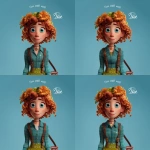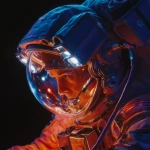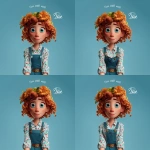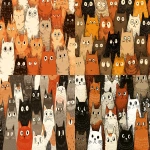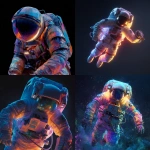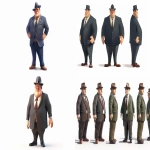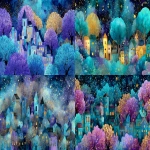Explore the Best AI Image Gallery
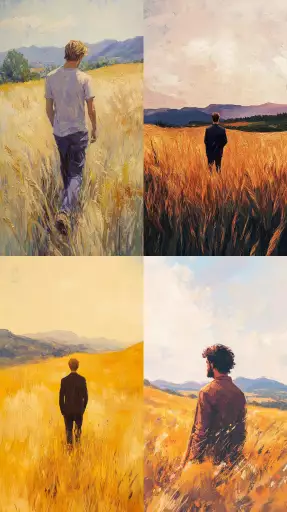
Pixels on Canvas: Exploring the Impact of AI-Generated Images in Art
The realm of art has always been a space for innovation, where boundaries are pushed and new forms of expression emerge. Today, artificial intelligence (AI) is at the forefront of this evolution, with AI-generated images captivating audiences and igniting debate within the creative industry.
These digital masterpieces, crafted by algorithms trained on vast datasets of images, possess a unique ability to generate astonishingly realistic and imaginative visuals. From photorealistic portraits to surreal landscapes, AI art tools are empowering individuals with limited artistic skills to create compelling works, blurring the lines between human and machine creativity.
The Creative Canvas Reimagined
One of the most significant impacts of AI-generated images is its democratization of art. Individuals without formal training can now access powerful tools that enable them to translate their ideas into visual form. This opens up new avenues for self-expression and empowers diverse voices within the art world.
Moreover, AI art tools are proving to be invaluable assets for artists seeking to explore new concepts and push creative boundaries. They can experiment with different styles, generate variations of existing artwork, and rapidly iterate on ideas, accelerating the creative process.
Beyond Aesthetics: Applications Across Industries
The applications of AI-generated images extend far beyond the realm of fine art. In advertising, they are used to create captivating visuals for marketing campaigns, while in fashion, they help designers visualize new collections and explore innovative textile patterns. Game developers leverage AI to generate realistic environments and character designs, enhancing immersive experiences.
In architecture and design, AI-generated images assist in conceptualizing building layouts, visualizing 3D models, and exploring innovative architectural styles. The potential for AI to revolutionize these industries is vast, leading to more efficient workflows and creative breakthroughs.
Ethical Considerations: Navigating Uncharted Territory
While the possibilities presented by AI-generated images are undeniably exciting, they also raise important ethical considerations that require careful attention.
Copyright and Ownership
A key debate revolves around copyright and ownership. Who owns the rights to AI-generated artwork – the creator of the algorithm, the user who inputs the prompts, or the AI itself? Establishing clear legal frameworks is crucial to address these complexities and ensure fair attribution and compensation.
Bias and Representation
AI algorithms are trained on existing datasets, which can inadvertently perpetuate biases present in society. This raises concerns about the representation of diverse cultures, ethnicities, and genders within AI-generated images. It is essential to develop techniques to mitigate bias and promote inclusivity in AI art generation.
The Value of Human Creativity
Some argue that AI-generated images diminish the value of human creativity. However, it is important to recognize that AI serves as a tool that can augment human artistic expression rather than replace it. By freeing artists from technical constraints, AI allows them to focus on conceptualizing and refining their ideas, ultimately leading to new forms of creative collaboration.
Future Trends: A Glimpse into the Evolving Landscape
The field of AI-generated images is rapidly evolving, with continuous advancements pushing the boundaries of what is possible. Here are some key trends to watch:
- More Realistic and Expressive Imagery: AI algorithms will continue to improve their ability to generate highly realistic and emotionally expressive images, blurring the lines between digital and physical art.
- Personalized Art Experiences: Users will have greater control over customizing AI-generated artwork, tailoring it to their preferences and creating unique pieces that reflect their individual style.
- Integration with Virtual and Augmented Reality: AI-generated images will seamlessly integrate with VR and AR environments, creating immersive and interactive art experiences.
- Ethical Frameworks and Regulations: As the use of AI in art becomes more prevalent, robust ethical guidelines and regulations will be developed to address issues of copyright, bias, and responsible innovation.
Conclusion
AI-generated images are undoubtedly transforming the art world, presenting both exciting opportunities and complex challenges. As technology continues to advance, it is crucial for artists, creators, policymakers, and the general public to engage in thoughtful dialogue about the ethical implications and societal impact of AI in art. By embracing responsible innovation and fostering collaboration, we can harness the power of AI to unlock new dimensions of creativity and push the boundaries of artistic expression.



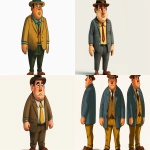
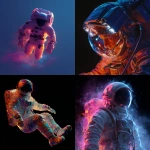


](https://images.ai-img.art/thumbnails/150/4f3d83c4b1d979b5be00f4ea80d67b71c0335bc1163e692d738e553ac37709e5.webp)
![**ultra detailed 8k cinematic black and white beauty portrait of a young woman from chest up, vertical frame, face, hands and hair filling the composition, smooth neutral grey studio background with soft dark vignette on the edges, center of the frame is her eye, lips and finger in a "shh" gesture oval symmetrical face with soft but well defined features, ultra smooth flawless skin, no pores, no wrinkles, perfect beauty retouch, straight elegant nose with soft highlight along the bridge and gentle shadow under the tip full sensuous lips with a sharp cupid’s bow, slightly parted, a thin bright glossy highlight strip on the lower lip emphasizing volume, subtle light reflection on the lip gloss one eye visible through a gap between fingers, other eye mostly hidden by the upper hand, long thick eyelashes like fake lashes, small bright catchlight in the pupil, upper eyelid with smoky eye makeup, darker tone along lash line fading smoothly towards the brow, dark thick well shaped eyebrows, gently arched, not overdramatic dark wavy hair, big glossy waves falling down, one clear S-shaped wave on the right side of the frame, soft highlights along the strands to show texture, hair swept away from the cheeks so the face is not covered both hands in thin semi-transparent black gloves up to the forearm, upper hand placed horizontally across the upper face, back of the hand towards camera, fingers slightly spread so that one finger is above the brows and another lower finger creates a narrow gap that reveals the eye, fingertips long and tapered, sharp stiletto-like nails visible under the sheer fabric, subtle darker seams along the fingers and glove edges lower hand bent so that the index finger is vertical and gently touching the center of the lips in a classic "shhh" pose, [...]** - Image #4 <@1264899319799222315>](https://images.ai-img.art/thumbnails/150/8507c113aa12343ebd50af4ab9c637a6cf1acf21c55772271eb6a66bb04fa39c.webp)


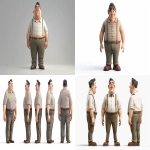
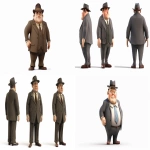

](https://images.ai-img.art/thumbnails/150/5487dcbcab0cd5702a67cc6819342ef56c05d0fc7730bfb7718ee291f10c3da3.webp)

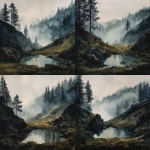
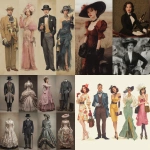
](https://images.ai-img.art/thumbnails/150/d08f607caf4a5c380defef68b778febb8911e8e51e51927b09ed67880bd3084b.webp)

![**ultra detailed 8k cinematic black and white beauty portrait of a young woman from chest up, vertical frame, face, hands and hair filling the composition, smooth neutral grey studio background with soft dark vignette on the edges, center of the frame is her eye, lips and finger in a "shh" gesture oval symmetrical face with soft but well defined features, ultra smooth flawless skin, no pores, no wrinkles, perfect beauty retouch, straight elegant nose with soft highlight along the bridge and gentle shadow under the tip full sensuous lips with a sharp cupid’s bow, slightly parted, a thin bright glossy highlight strip on the lower lip emphasizing volume, subtle light reflection on the lip gloss one eye visible through a gap between fingers, other eye mostly hidden by the upper hand, long thick eyelashes like fake lashes, small bright catchlight in the pupil, upper eyelid with smoky eye makeup, darker tone along lash line fading smoothly towards the brow, dark thick well shaped eyebrows, gently arched, not overdramatic dark wavy hair, big glossy waves falling down, one clear S-shaped wave on the right side of the frame, soft highlights along the strands to show texture, hair swept away from the cheeks so the face is not covered both hands in thin semi-transparent black gloves up to the forearm, upper hand placed horizontally across the upper face, back of the hand towards camera, fingers slightly spread so that one finger is above the brows and another lower finger creates a narrow gap that reveals the eye, fingertips long and tapered, sharp stiletto-like nails visible under the sheer fabric, subtle darker seams along the fingers and glove edges lower hand bent so that the index finger is vertical and gently touching the center of the lips in a classic "shhh" pose, [...]** - Image #2 <@1264899319799222315>](https://images.ai-img.art/thumbnails/150/d87499f6bdc5a4a822aea4674654f70073b052542a1aaa1d08461a13ca2e07f9.webp)
](https://images.ai-img.art/thumbnails/150/f3411154f4c743a26f102ecfc985f3f6214e93b285748fac66c88f3b52f85b26.webp)

](https://images.ai-img.art/thumbnails/150/1871c145bfe0276c6e1bacf6ec0da6d2dae71370bf71674589af29a201acdd5f.webp)
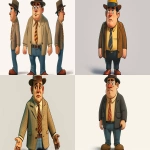
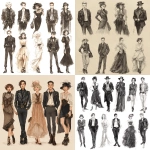

](https://images.ai-img.art/thumbnails/150/7c4350a99935771fe343a7ae65c780cf4cd6b861e69cdc32bd58a3a92fb2476f.webp)
![**ultra detailed 8k cinematic black and white beauty portrait of a young woman from chest up, vertical frame, face, hands and hair filling the composition, smooth neutral grey studio background with soft dark vignette on the edges, center of the frame is her eye, lips and finger in a "shh" gesture oval symmetrical face with soft but well defined features, ultra smooth flawless skin, no pores, no wrinkles, perfect beauty retouch, straight elegant nose with soft highlight along the bridge and gentle shadow under the tip full sensuous lips with a sharp cupid’s bow, slightly parted, a thin bright glossy highlight strip on the lower lip emphasizing volume, subtle light reflection on the lip gloss one eye visible through a gap between fingers, other eye mostly hidden by the upper hand, long thick eyelashes like fake lashes, small bright catchlight in the pupil, upper eyelid with smoky eye makeup, darker tone along lash line fading smoothly towards the brow, dark thick well shaped eyebrows, gently arched, not overdramatic dark wavy hair, big glossy waves falling down, one clear S-shaped wave on the right side of the frame, soft highlights along the strands to show texture, hair swept away from the cheeks so the face is not covered both hands in thin semi-transparent black gloves up to the forearm, upper hand placed horizontally across the upper face, back of the hand towards camera, fingers slightly spread so that one finger is above the brows and another lower finger creates a narrow gap that reveals the eye, fingertips long and tapered, sharp stiletto-like nails visible under the sheer fabric, subtle darker seams along the fingers and glove edges lower hand bent so that the index finger is vertical and gently touching the center of the lips in a classic "shhh" pose, [...]** - Image #1 <@1264899319799222315>](https://images.ai-img.art/thumbnails/150/ff5a24c7c060f5350508823c406c28c9596aea4e37eefb60abc0f37504a37383.webp)
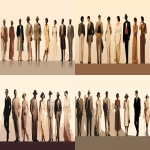
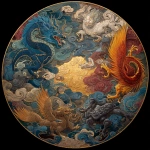
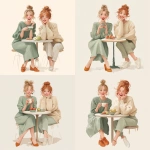

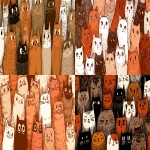
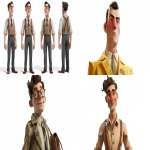
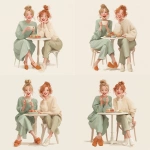
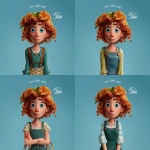
](https://images.ai-img.art/thumbnails/150/e07ad2e7379a835127482b0fd3176192c001c90e68a85b4315cf482b6a3f5ea5.webp)
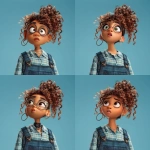
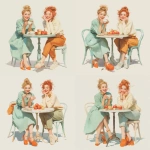
![**ultra detailed 8k cinematic black and white beauty portrait of a young woman from chest up, vertical frame, face, hands and hair filling the composition, smooth neutral grey studio background with soft dark vignette on the edges, center of the frame is her eye, lips and finger in a "shh" gesture oval symmetrical face with soft but well defined features, ultra smooth flawless skin, no pores, no wrinkles, perfect beauty retouch, straight elegant nose with soft highlight along the bridge and gentle shadow under the tip full sensuous lips with a sharp cupid’s bow, slightly parted, a thin bright glossy highlight strip on the lower lip emphasizing volume, subtle light reflection on the lip gloss one eye visible through a gap between fingers, other eye mostly hidden by the upper hand, long thick eyelashes like fake lashes, small bright catchlight in the pupil, upper eyelid with smoky eye makeup, darker tone along lash line fading smoothly towards the brow, dark thick well shaped eyebrows, gently arched, not overdramatic dark wavy hair, big glossy waves falling down, one clear S-shaped wave on the right side of the frame, soft highlights along the strands to show texture, hair swept away from the cheeks so the face is not covered both hands in thin semi-transparent black gloves up to the forearm, upper hand placed horizontally across the upper face, back of the hand towards camera, fingers slightly spread so that one finger is above the brows and another lower finger creates a narrow gap that reveals the eye, fingertips long and tapered, sharp stiletto-like nails visible under the sheer fabric, subtle darker seams along the fingers and glove edges lower hand bent so that the index finger is vertical and gently touching the center of the lips in a classic "shhh" pose, [...]** - Image #3 <@1264899319799222315>](https://images.ai-img.art/thumbnails/150/4c03a422708b372b43caaee1e2929933c40f0a13dc069beeeb228a60b126223b.webp)
